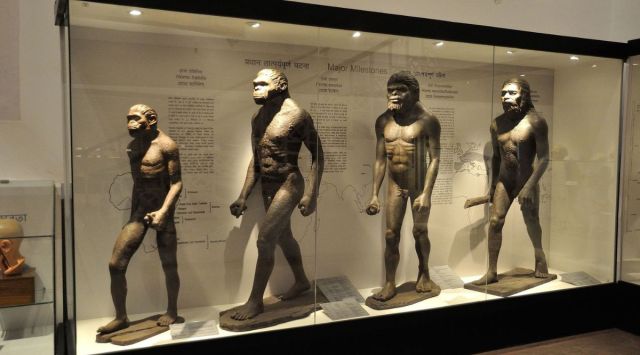Scientists discover gene that let humans walk upright
Scientists discover gene that let humans walk upright
A study combining large-scale biobank data, machine learning, and genomics has identified the genes that helped primates start walking upright on two legs.

The ability to walk on two legs freed two hands for humans to wield tools. (Wikimedia foundation)
If primates had not switched to walking on two legs millions of years ago, it is unlikely that it would have freed two hands for humans to make use of tools. So, bipedal locomotion, the word for walking on two legs, could be thought of as one of the most significant advances in our evolutionary history. Now, scientists claim to have found the gene which made that possible.
Researchers combined deep learning and genome-wide association studies to create what is the first map of the genome regions that are responsible for the skeletal changes in primates that led to upright walking, according to Columbia University. This map shows that the genes that caused these changes were strongly supported by natural selection, giving early humans and evolutionary advantage.
“On a more practical level, we’ve also identified genetic variants and skeletal features that are associated with hip, knee, and back arthritis, the leading causes of adult disability in the United States,” says Tarjinder Singh, co-author of a study published in the journal Science, in a press statement.
For the study, the researchers analysed more than 30,000 full-body X-rays from the UK Biobank and trained a deep learning algorithm to standardise the X-rays, remove quality issues and them precisely measure many skeletal features.
After that, they scanned the human genome to pick out chromosomal regions that were associated with variations in 23 important skeletal measures. For example, shoulder width, torso length, and tibia-to-femur angle. This analysis revealed 145 regions associated with genes that regulate the development of the skeleton.
They then found that many of these 145 regions had overlaps with “accelerated regions” of the human genome, which evolved quite fast over time compared with the same regions in great apes.
“What we’re seeing is the first genomic evidence that there was selective pressure on genetic variants that affect skeletal proportions, enabling a transition from knuckle-based walking to bipedalism,” said co-author Vagheesh M Narasimhan in a press statement.

 Good Grow: The Marijuana Farm Founded by Akufo-Addo’s Daughters
Good Grow: The Marijuana Farm Founded by Akufo-Addo’s Daughters  National Food Suppliers for Free SHS set to picket at Education Ministry
National Food Suppliers for Free SHS set to picket at Education Ministry  Information Ministry justifies ¢151k paid to staff as Covid-19 risk allowance
Information Ministry justifies ¢151k paid to staff as Covid-19 risk allowance  I’ll help farmers with tractors to increase productivity – Bawumia promises
I’ll help farmers with tractors to increase productivity – Bawumia promises  CETAG meets national teaching council to conclude on strike
CETAG meets national teaching council to conclude on strike  Adom Kyei Duah cannot be the Jesus that Christians seek – Christian Council of Ghana
Adom Kyei Duah cannot be the Jesus that Christians seek – Christian Council of Ghana  Bawumia’s smartphone pledge misguided and visionless – Adongo
Bawumia’s smartphone pledge misguided and visionless – Adongo